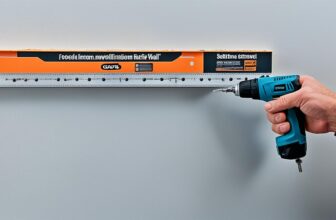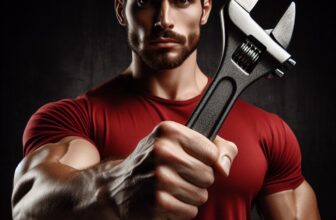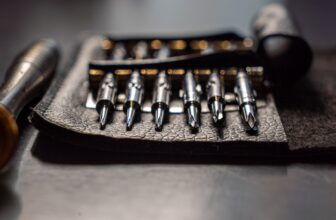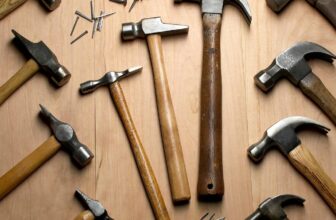Pliers are essential, versatile hand tools used to firmly grip objects, bend wires, cut cables, turn fittings, crimp metal connectors, and precisely manipulate small parts. They likely originated from blacksmith tongs during the Bronze Age and continue to be invaluable across countless trades. This comprehensive 4500-word guide will delve into plier types, key applications, choosing the right pair, proper use and care, safety guidelines, and emerging innovations so you can fully utilize these essential tools.
Table of Contents
What Are Pliers and How Do They Work?
Pliers consist of two metal handles riveted together at a pivot point. One handle ends in a narrow jaw, typically with ridges or teeth to improve grip, while the other handle forms an insulated grip for the user. By squeezing the handles together, the jaws at the end close and apply tension, allowing you to grasp objects firmly.
The mechanical advantage provided by the pivot point gives the user added leverage and strength for gripping tightly and working with the item. Springs or locking mechanisms on some models keep the jaws closed without needing to squeeze constantly.
Disclaimer:
Our recommendations are based on extensive experience with and/or knowledge of these products, and we do so not because of the modest commissions we could earn but rather because we believe they are actually beneficial and useful. We are honored to be these tools' affiliates. We might receive commissions from Amazon, and other merchants when you buy something after clicking one of our links. Our affiliate policy is covered in more detail here. If you don't think these things will help you accomplish your goals, please don't spend any money on them.
The size, shape, length, and texture of the jaws adapt pliers for various specific purposes. Common configurations include wide, flat jaws for turning fittings, long and narrow jaws for reaching wires in tight spaces, serrated jaws that firmly grip pipes, and sharp, hardened cutting edges for slicing through cables. Names like linesman pliers, snap ring pliers and crimping pliers come from the specialized jaws that suit particular tasks.
The Vital Importance of Pliers
Pliers rank among the most frequently utilized tools across trades like electrical work, plumbing, automotive repair, machining, construction, jewelry making, crafting, and home DIY use. Their ability to precisely grip small parts makes them a vital component of any well-equipped toolkit. Models like locking pliers also enable users to apply continual tension without needing to repeatedly squeeze, freeing up hands for simultaneous tasks.
Beyond basic gripping, specialized pliers also excel at bending, looping, cutting, twisting, pulling, and crimping. From pulling fish hooks to splicing electrical wires, manipulating stuck hose fittings, cutting precision jewelry pieces, or securing metal connectors, pliers tackle an incredible range of applications that would be difficult or impossible to handle reliably with fingers and hands alone.
Types of Pliers
With hundreds of styles available today optimized for various applications, knowing the main types of pliers helps ensure you select the best pair for the job. Some key categories include:
Needle Nose Pliers
Distinguished by their tapered, narrow jaws forming a long, pointy gripping surface, needle nose pliers are ideal for reaching into tight, confined spaces that most other pliers cannot. This allows them to grip small objects, bend and loop thin wires, and manipulate delicate materials or components. Their slim profile also permits detailed work in intricate crafts and electronics.
Common needle nose plier uses:
- Bending and shaping thin gauge wire
- Opening tight spaces to reach small fasteners
- Gripping nuts, bolts, and pins in narrow access areas
- Looping wire through holes or lugs
- Precise manipulation of tiny components
- Bead stringing and jewelry fabrication
With cutting edges on some models, needle nose pliers serve as nimble multi-tasking instruments for detail-oriented work.
Slip Joint Pliers
Slip joint pliers are named after their sliding pivot point mechanism, which allows for quick continuous adjustment of jaw spacing to grip various sized objects. They operate much like an adjustable wrench for rounded and hex-shaped items. Models with serrated teeth provide an enhanced gripping surface. These “Channellock” style pliers are especially useful for plumbers and pipefitters manipulating pipe joints and fittings. The adjustable parallel jaws also suit electricians grasping wires, automotive technicians removing hoses, and other applications requiring a versatile, self-sizing grip.
Typical slip joint plier duties include:
- Gripping round objects like pipes up to 1-1/2” diameter
- Turning threaded pipe fittings and valve handles
- General grasping of wires, bolts, and machine parts
- Removing caps, cotter pins, and fasteners
- Prying small items or gripping irregular shapes
Slip joint pliers bring quick adaptability to grip jobs across many trades.
Linesman Pliers
As their name suggests, linesman pliers were originally designed for electric utility line workers installing power distribution infrastructure. Their specialized serrated jaws provide an exceptional grip on cylindrical objects like wires and cables, while the thick insulated handles facilitate secure twisting and bending leverage. The knurled teeth also help prevent slipping and damage to softer wire coatings.
Common duties handled by linesman pliers:
- Gripping, twisting, bending electrical wires
- Cutting and pulling cables
- Hammering staples into utility poles
- Crimping wire connectors and lugs
- Twisting together stranded conductors
- Splicing cables of various sizes
Modern linesman pliers continue to be must-have instruments for electricians, whether working with large gauge electrical wiring or delicate electronics components.
Diagonal Cutting Pliers
Diagonal cutting pliers, sometimes called diagonal cutters or dikes, employ angled blades that slice cleanly through wires, cables, rivets, and other metal items by applying force diagonally against the grain. The sharp, beveled edges serve the material cleanly without crushing, leaving a nice flush cut. Models designed for electronics use have finely ground cutting edges for precision trimming of small component leads and wires.
Typical diagonal cutting plier uses include:
- Cutting wires, cables, and bolts up to 18 18-gauge
- Trimming zip ties and plastic strapping
- Snipping rivets, cotter pins, small nails
- Cropping component leads on circuit boards
- Removing seized or broken screws and bolts
- Salvaging scrap metal pieces
Electricians, automotive technicians, HVAC tradesmen, machinists, and other hands-on professions get frequent use from these aggressive straight-bladed cutters.
Locking Pliers
Locking pliers utilize a built-in lever and gear mechanism that maintains constant tension and pressure on an object without needing to manually squeeze the handles. This self-locking action allows hands-free gripping and facilitates one-handed operation. Curved jaw models provide an especially strong clamping force. The teeth also help prevent slippage and surface damage.
Some common locking plier applications:
- Clamping pressure on hoses, pipes, fittings
- Holding parts in place for welding, gluing
- Gripping smooth, round objects like pipes
- Removing seized bolts, pumps, pulleys
- Temporarily patching holes until permanent repair
- Assembling furniture by clamping pieces
- Holding awkward items in place for cleaning
From DIY home repairs to heavy machinery maintenance, locking pliers bring convenient versatility across many trades thanks to their unique self-locking function.
Snap Ring Pliers
Snap ring pliers feature specialized narrow tips with curved ends designed to reach into tight spaces and grip the ends of snap rings, retaining rings, and circlips to remove or install them. This fastener rings secure pulleys, gears, bearings, and other components into axles, shafts, and hydraulic cylinders. Changing them requires simultaneously squeezing and twisting to disengage from their groove.
Snap ring pliers assist technicians in performing repairs like:
- Removing pulleys and gears on engines
- Extracting roller bearings from mechanical equipment
- Detaching hydraulic pistons and cylinders
- Accessing internal components sealed by retaining rings
- General industrial maintenance and repair
Available in internal and external ring variations, and straight or 90° angle tips, snap ring pliers form an essential rescue toolkit for machinists and mechanics.
Fishing Pliers
Finally, while not used in traditional trades, fishing pliers deserve a mention as specially purposed models for sport anglers. Featuring short, powerful jaws, grippy teeth, and line cutters, fishing pliers allow the safe removal of embedded hooks from the mouths of fish. Some also crimp metal and rubber sleeves to connect fishing tackle.
Every seasoned angler keeps a pair aboard their boat or vest to efficiently handle catches while protecting hands from sharp teeth and spiny fins. The compact size also suits tackle box storage.
This table summarizes the best plier types for various common applications:
| Task | Recommended Pliers |
| Electrical wiring | Linesman |
| Plumbing fittings | Slip-joint |
| Automotive Repair | Snap ring, locking |
| Jewelry making | Flat nose, round nose |
| Household uses | Slip-joint, needle nose |
| Fishing | Specialty fishing pliers |
Now that we’ve covered the major categories of pliers tailored to various industries, let’s go over what features to evaluate when selecting the right pair to match your needs.
Choosing the Right Pliers
With different types of pliers optimized for specific applications, considering these key factors helps determine the best pair for your needs:
Intended Use
First identify the tasks you need pliers for, whether electrical work, jewelry making, automotive repair, or home use. This narrows options to the types designed for those jobs like linesman pliers for electricians.
Design
With so many styles and brands of pliers filling store shelves and websites, choosing the right ones for your particular job requires comparing a few key criteria:
Materials
- Steel – Chrome vanadium or chrome molybdenum alloys offer durability for heavy cutting and grip strength. Softer grades like 304 stainless steel resist corrosion in wet environments.
- Aluminum – Aircraft-grade aluminum handles are very lightweight while still strong. The lightness reduces fatigue over extended use. Anodized coating resists abrasion.
- Plastic – Rubberized, cushioned grips on handles provide comfort and control when substantial squeezing force is needed. The softer surface also helps prevent the marring of polished metal objects.
- Coated – Dipped handles or powder-coated metal protect against corrosion while allowing a firm grip. Useful in wet settings.
Size
The length and jaw opening should match the expected uses. Avoid selecting pliers that are oversized and heavy for delicate electronics work, or too small for gripping 1” pipes. Generally, choose larger sizes than are strictly needed to allow some leeway.
Grips
Cushioned grips that contour to hand anatomy promote less fatigue for high-leverage tasks or repetitive cutting motions. Ensure grips have adequate surface area and friction to prevent hand slippage when applying torque or pressure.
Nose/Jaw Style
Choose straight or angled nose pliers based on the accessibility of the spaces you’ll be working in. Straight noses provide the highest leverage when pulling directly away from the pivot fulcrum. Offset bent noses improve line-of-sight and knuckle clearance in tight spots.
Jaw styles like serrated, smooth, blunt, needlenose, curved, or duckbill suit different purposes:
- Serrated – Grips round objects like pipes, rods, bolts
- Smooth – Won’t scratch polished metal surfaces
- Blunt – Prevents marking soft wire coatings
- Needlenose – Reaches into confined spaces
- Curved – Holds circular objects in the center of the arc
- Duckbill – Flatter gripping angle, spreads force
Spring-Loaded
Self-opening, spring-loaded pliers automatically reopen after each cut or crimping motion. This speeds up repetitive tasks like cutting lengths of wire or weatherproofing multiple cable ends.
Comfort
The best pliers feel comfortable during extended use with padded, ergonomic handles that don’t pinch hands. Lightweight aluminum or plastic handles reduce fatigue for repetitive tasks.
Durability
Tradespeople require exceptionally durable pliers, so examine construction quality. Features like hardened steel cutting edges, strong pivot joints, and molded grips last through years of use without failure.
Once you select suitable pliers, proper maintenance also proves critical for longevity…
Key Uses of Pliers Across Trades
While designed to grip objects, the specialized jaws and leverage of pliers make them vital for manipulating small items, bending wire, cutting cable, turning fittings, crimping connectors, and countless other trade applications.
Electrical Work
Electricians rely extensively on multiple types of pliers:
- Linesman Pliers – The specially hardened cutting blades on linesman pliers allow slicing through copper and aluminum wire up to 14 gauge with ease as electricians splice wires to make connections. Linesman pliers utilize leverage for tight bends while shaping wiring inside junction boxes and conduits. The ripping teeth grab and twist wires together for sound electrical contacts. Some also have crimping dies built into the head for securing connectors.
- Needle Nose Pliers – Excellent for precision work in tight quarters, the long narrow jaws of needle nose pliers help electricians guide wires around corners and make turns inside crowded switch and outlet boxes where fingers can’t fit. Models with cutting edges trim wire ends after crimping on connectors.
- Diagonal Cutting Pliers – While linesman pliers make rough cuts, diagonal cutting pliers offer precision thanks to sharp beveled edges that snip cables and wires cleanly without crushing or pinching. Electricians use these to trim wire ends to uniform lengths for neat connections.
- Crimping Pliers – These specialty pliers securely crimp metal connectors and terminals onto exposed wire ends using precisely machined hexagonal crimping dies built into the jaws. Ratcheting versions ensure proper pressure.
Plumbing
Plumbers find pliers invaluable for jobs like:
- Grasping Fittings – Wide, flat-jawed pliers provide excellent grip and leverage for turning stuck water fittings, compression nuts, and pipe threads when assembling or disassembling plumbing. Ridged teeth prevent metal fasteners from slipping.
- Cutting Pipes – While saws cut plastic and copper pipes to length, pliers nip off pieces of flexible tubing for appliances and supply lines.
- Pulling Gaskets – Slip joint pliers carefully remove old rubber gaskets and o-rings during faucet and valve repair.
- Removing Obstructions – Plumbers often carry locking pliers to help extract objects trapped in drains or pipes thanks to the adjustable, tenacious grip.
Automotive Repair
Mechanics utilize locking and snap ring pliers:
- Removing hoses, pumps, pulleys
- Changing gears, bearings, and bushings
- Adjusting carburetors and fuel systems
- Gripping smooth, rounded surfaces
- Accessing awkward angles during repairs
Locking pliers allow hands-free gripping of slippery components during diagnostics or maintenance.
The specialized narrow tips on snap ring pliers reach into tight mechanical spaces.
Household / DIY
Homeowners benefit from using slip-joint, linesman, and needle nose pliers for tasks like:
- Untying knots and opening packages
- Twisting, cutting, and bending assorted wires
- Turning nuts, caps, valves
- Removing nails, staples
- Assembling furniture
- Replacing light switches
- For most homeowners, a pair of slip-joint pliers can tackle occasional basic repair jobs around the house.
Crafting and Jewelry Making
Craft pliers include:
- Round nose pliers for shaping jewelry
- Flat nose for grasping delicate items
- Flush cutters snip jump rings cleanly
- Bail forming pliers craft wire loops
As we’ve seen, specialized pliers enable professionals across electrical, plumbing, mechanical, and construction fields to work more precisely, safely, and efficiently.
Now let’s go over some best practices for properly caring for your pliers to maintain high performance and longevity…
Caring for Your Pliers
Like all frequently used tools, proper plier maintenance ensures longevity and performance. Recommended care includes:
Cleaning
Regular cleaning removes corrosive grime or residue. Wipe plier jaws clean after each use. Occasionally clean the joint area with compressed air to dislodge debris. Non-abrasive cleaners and cloths help preserve the finish.
Proper Storage
Storing pliers in a dry toolbox or pouch prevents moisture damage which can corrode joints or cutting edges. If wet from use, dry thoroughly before storage.
Lubrication
Periodically apply light machine oil or lubricant like Tri-Flow to the pivot joint. Avoid over-oiling. This prevents binding and keeps the action smooth when gripping objects.
Inspection
Inspect pliers for wear. Look for cracked handles or loose rivets around the pivot point which indicate a need for replacement. Send cutting-type pliers out for sharpening or replace them when the edges grow dull.
By caring for pliers properly, quality versions can easily last decades. Up next we will cover vital safety guidelines when using pliers to avoid injuries…
Safety When Using Pliers
While extremely useful tools, pliers also pose some risks to users who fail to handle them with proper precautions, including:
Hand and Finger Injuries
Pliers apply high clamping pressure designed to tightly grip objects. Fingers or skin can become trapped and crushed between the jaws resulting in painful pinches or serious damage. Grip pliers by the insulated handles only to keep hands and fingers safely clear of the jaws when squeezing.
Slipping
The ridged teeth on pliers help grab items securely, but smooth or worn jaws increase the chances of slipping which may cause injury. Avoid applying excess force that can cause gripped objects to slip suddenly. Replace worn pliers.
Eye Injuries
When cutting with pliers, debris often flies rapidly towards the face. Wear safety glasses to protect your eyes. Diagonal cutting pliers propel small clipped pieces at high speed. Face away from people.
Electrical Shock
Although insulated, the jaws on linesman and other pliers conduct electricity if they contact live circuits. Use extreme caution and personal protective equipment when working with wiring.
By following essential precautions, pliers provide years of safe, effective use across almost any trade or hobby.
The final section will explore recent innovations and the future of these vital tools…
The Future of Pliers
While traditional models continue proving effective, plier technology and materials continue advancing:
High-Strength Composites
Space-age composites like carbon fiber, boron, and fiberglass allow lighter-weight pliers with superior strength-to-weight ratios for reduced fatigue. Expect increasing use in aviation and aerospace applications.
Smart Sensors
Pliers with built-in sensor modules can actively monitor grip pressure, joint alignment, and usage cycles, then send data and alerts to optimize performance and identify pending maintenance needs before failures occur.
Ergonomic Handles
Human factors research improves handle shapes to better fit hand anatomy, with contours and padding that increase comfort while reducing hand strain for those using pliers for extended periods.
Laser Welded Joints
Laser welding creates incredibly precise, narrow seams that bond handles and jaws into near-seamless single-piece construction. This promises the smoothest possible action with minimal play or wiggle for generations.
Conclusion
From originating in blacksmith shops to modern aerospace composite models, pliers continue to prove indispensable across countless roles. Their specialized jaws make easy work of tasks impossible to reliably handle with fingers alone. By understanding the many types, proper selection for intended uses, correct maintenance, and safe practices, pliers provide a lifetime of service for tradesmen and hobbyists alike.
References & Ressources:








